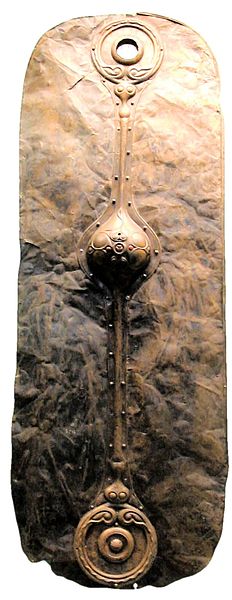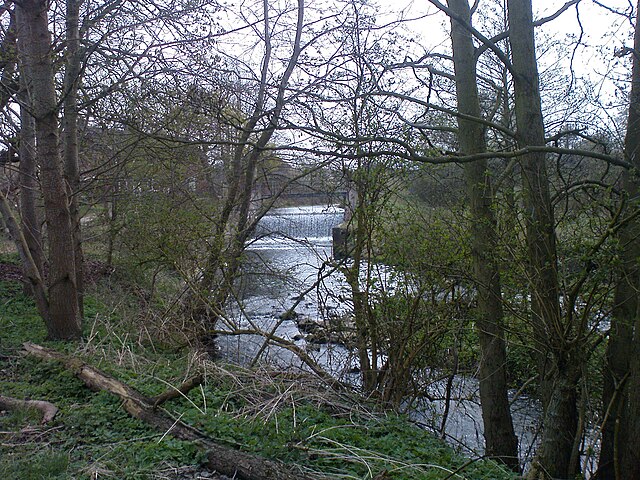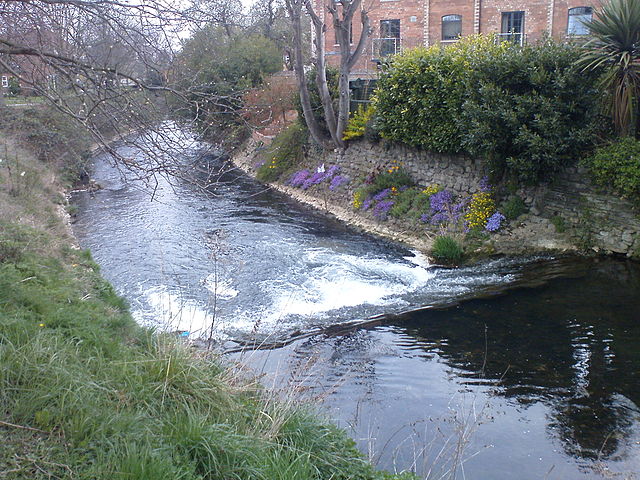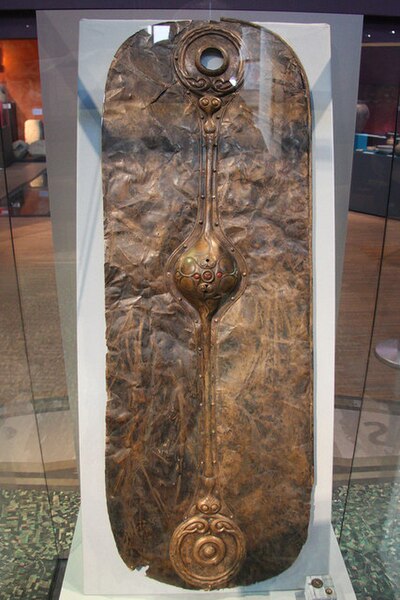The Witham Shield is an Iron Age decorative bronze shield facing of La Tène style, dating from about the 4th century BC. The shield was discovered in the River Witham in the vicinity of Washingborough and Fiskerton in Lincolnshire, England in 1826. Further excavations at a nearby site have revealed posts interpreted as the foundation for a causeway, as well as artefacts including a sword, spears and part of a human skull with a sword fragment lodged within. The shield is now in the British Museum.
Witham Shield
Drawing of the shield made in 1863 by Orlando Jewitt in John Kemble's book Horae Ferales, clearly showing the long-legged boar
Detail of the central boss
The River Witham is a river almost entirely in the county of Lincolnshire in the east of England. It rises south of Grantham close to South Witham at SK8818, passes through the centre of Grantham, passes Lincoln at SK9771 and at Boston, TF3244, flows into The Haven, a tidal arm of The Wash, near RSPB Frampton Marsh. The name "Witham" seems to be extremely old and of unknown origin. Archaeological and documentary evidence shows the importance of the Witham as a navigable river from the Iron Age onwards. From Roman times it was navigable to Lincoln, from where the Fossdyke was constructed to link it to the River Trent. The mouth of the river moved in 1014 following severe flooding, and Boston became important as a port.
The Grand Sluice at Boston, where the River Witham empties into The Haven, which is tidal below this point
River Witham at Saltersford Bridge 1 mile south of Grantham. This part of the Witham is home to one of the last viable white clawed crayfish populations in the UK. (Credit: Mark A. O'Neill)
River Witham at New Somerby, Grantham
The Witham Shield, normally kept at the British Museum photographed during its visit to The Collection in 2013







